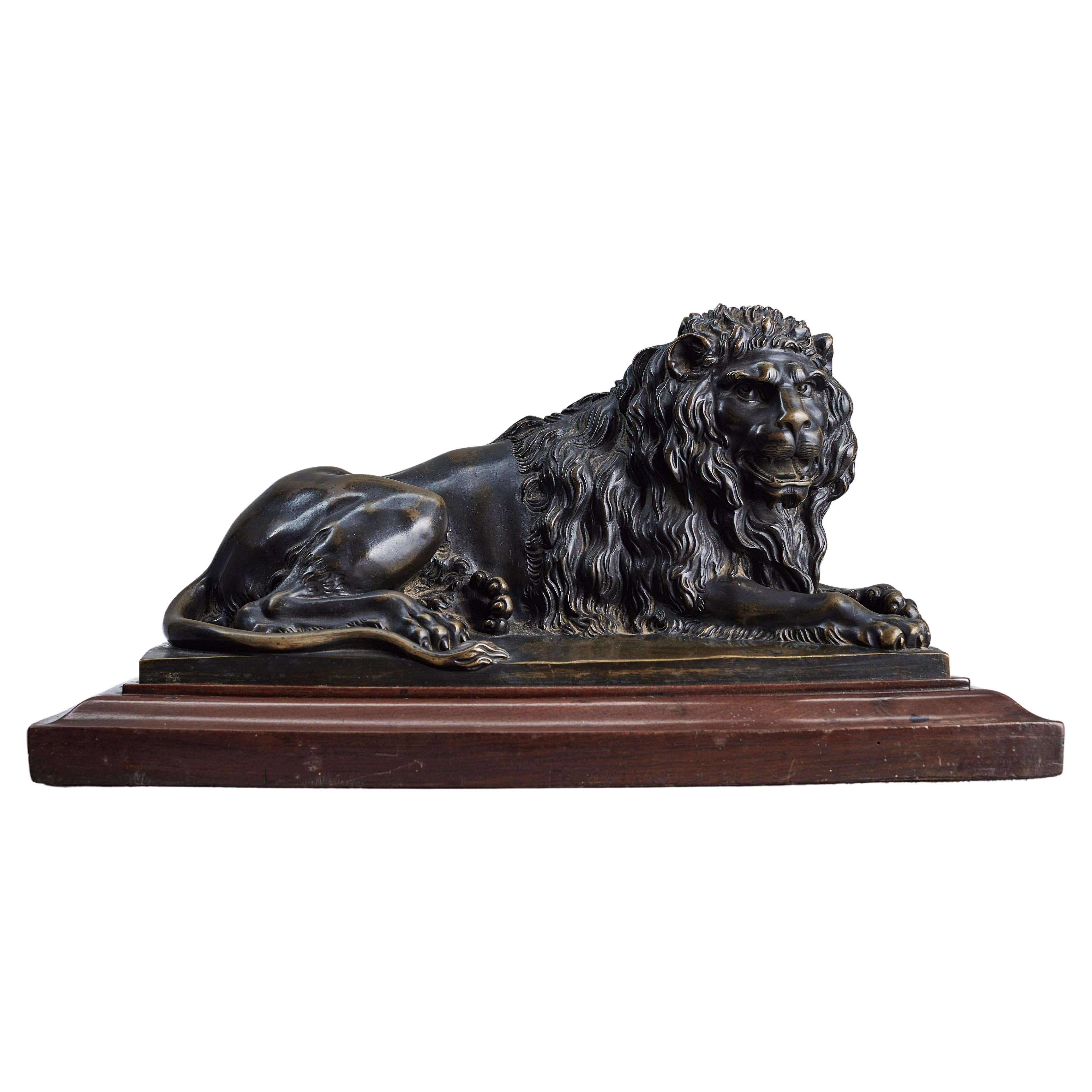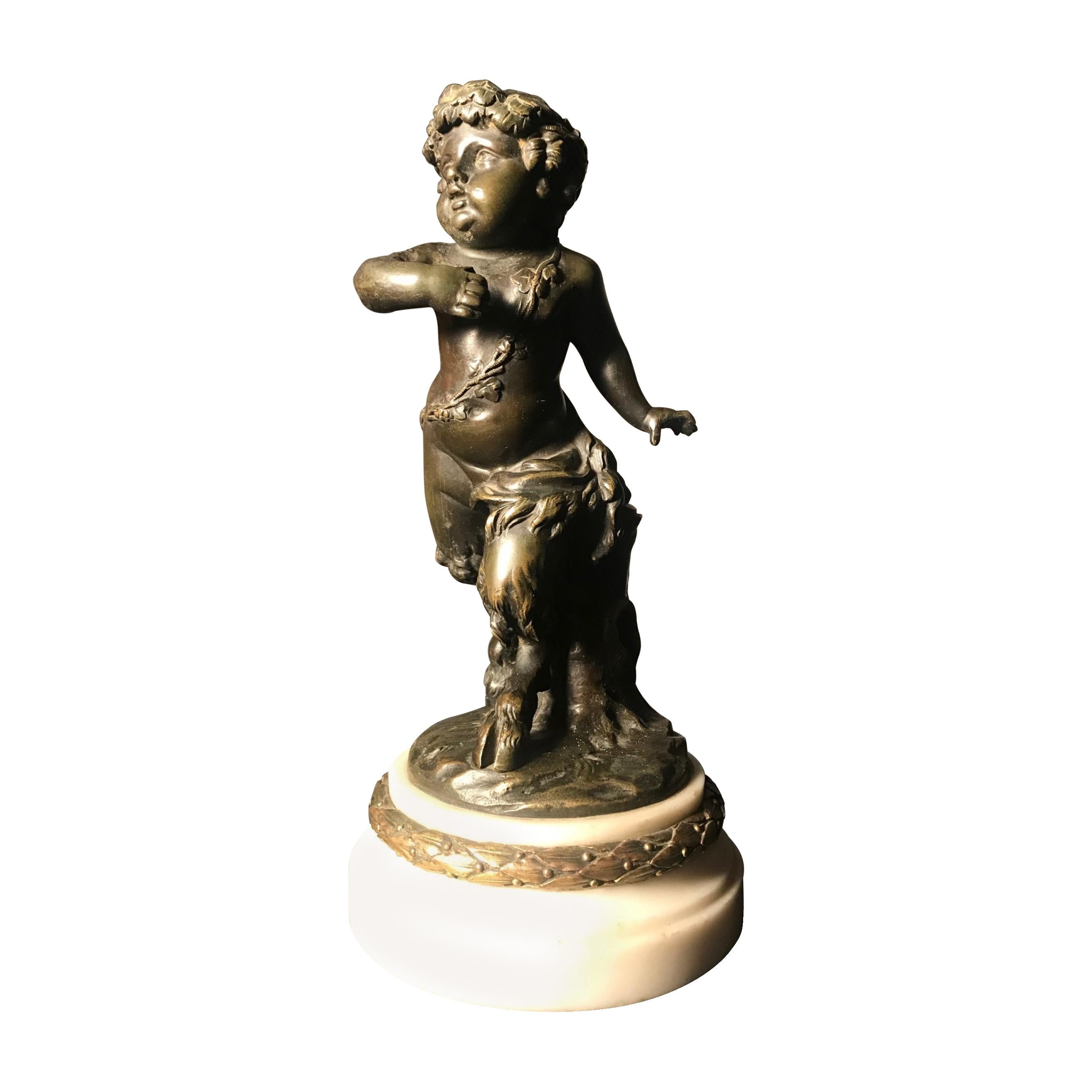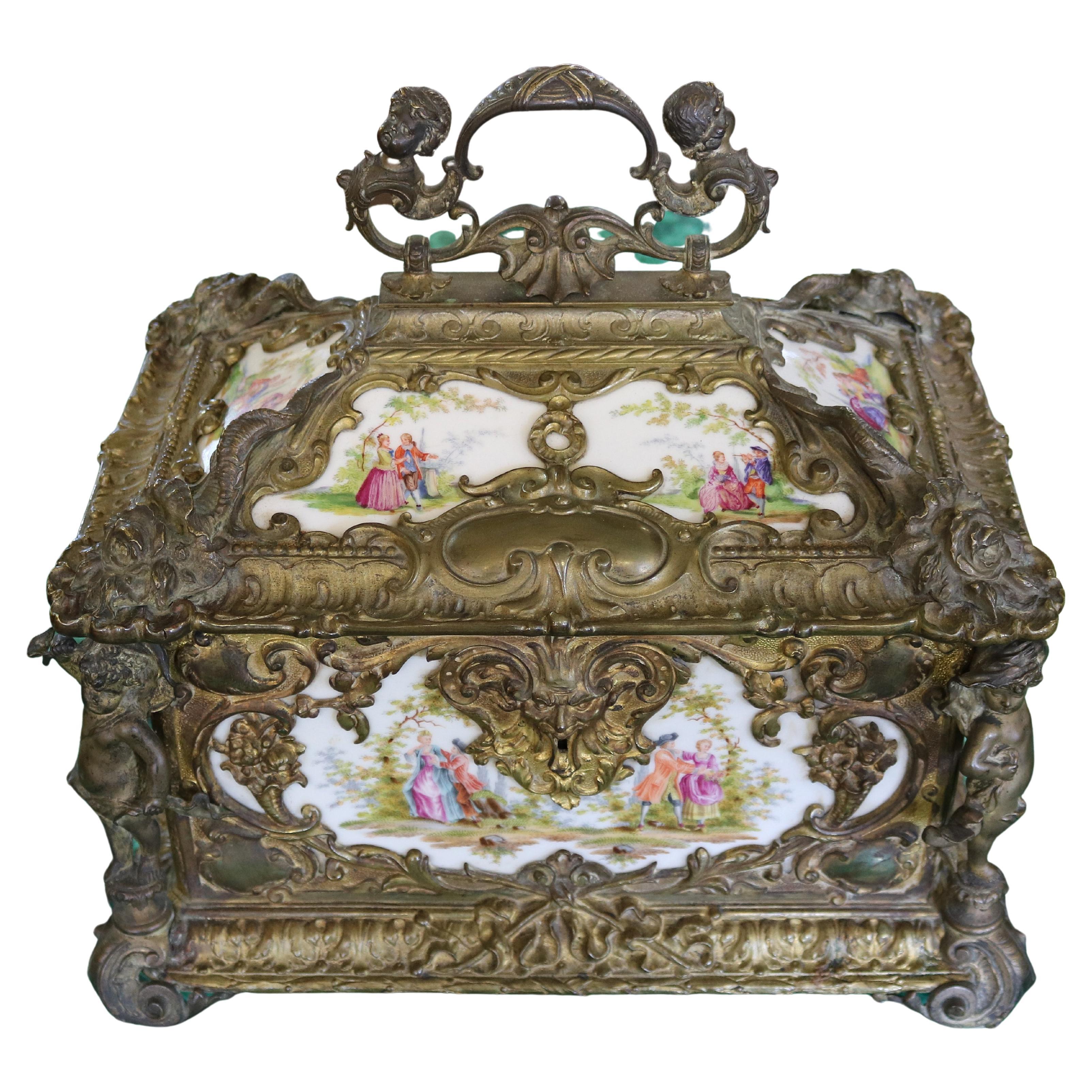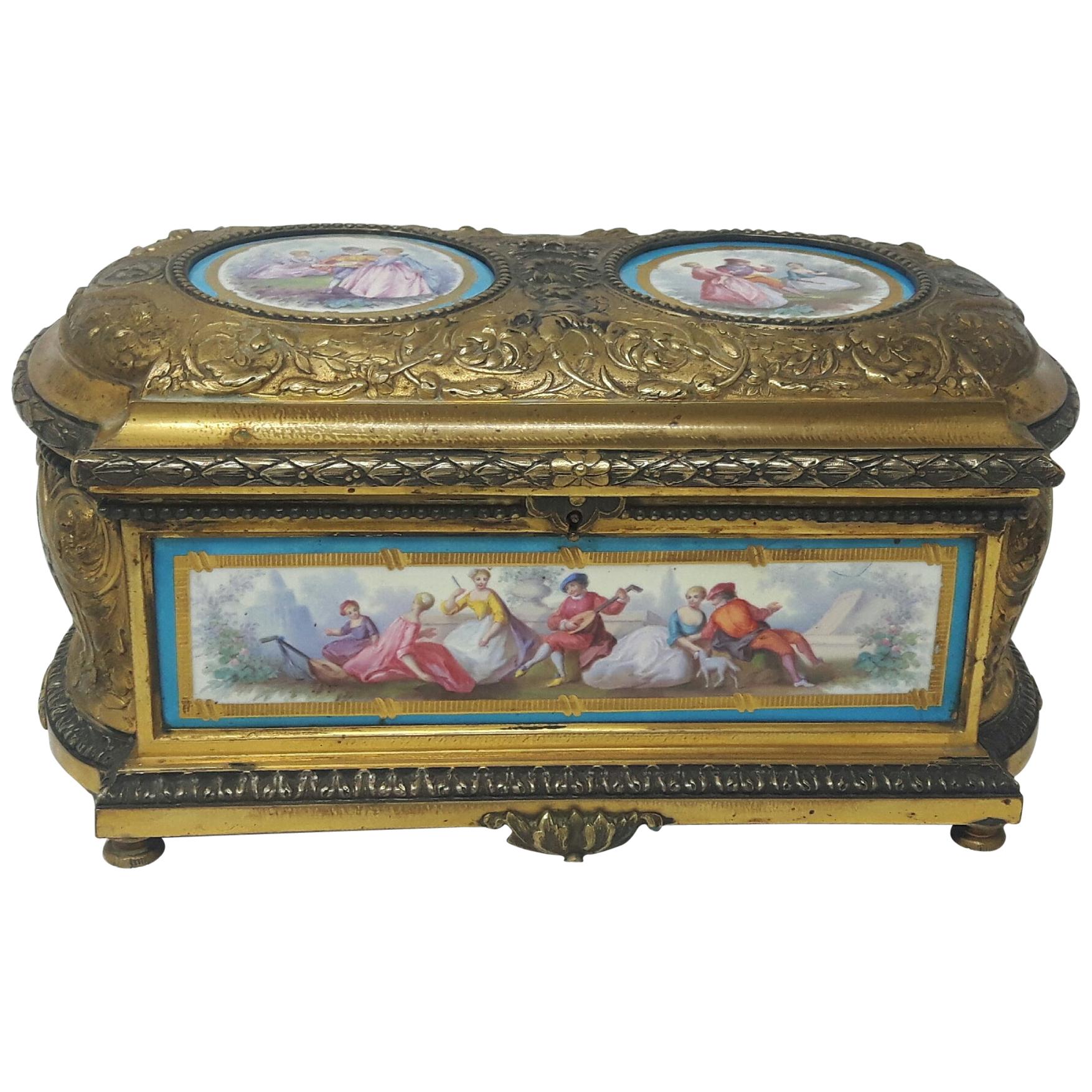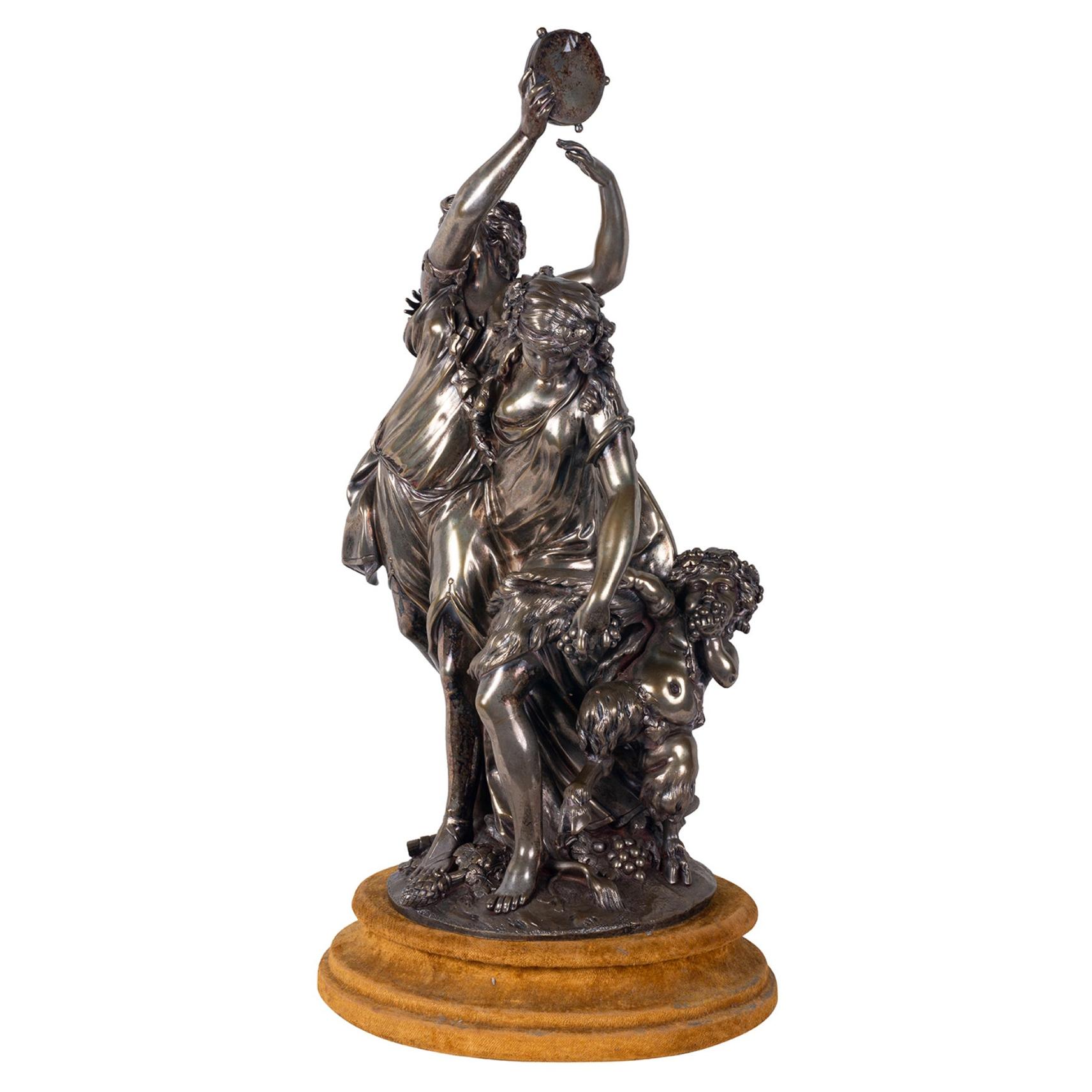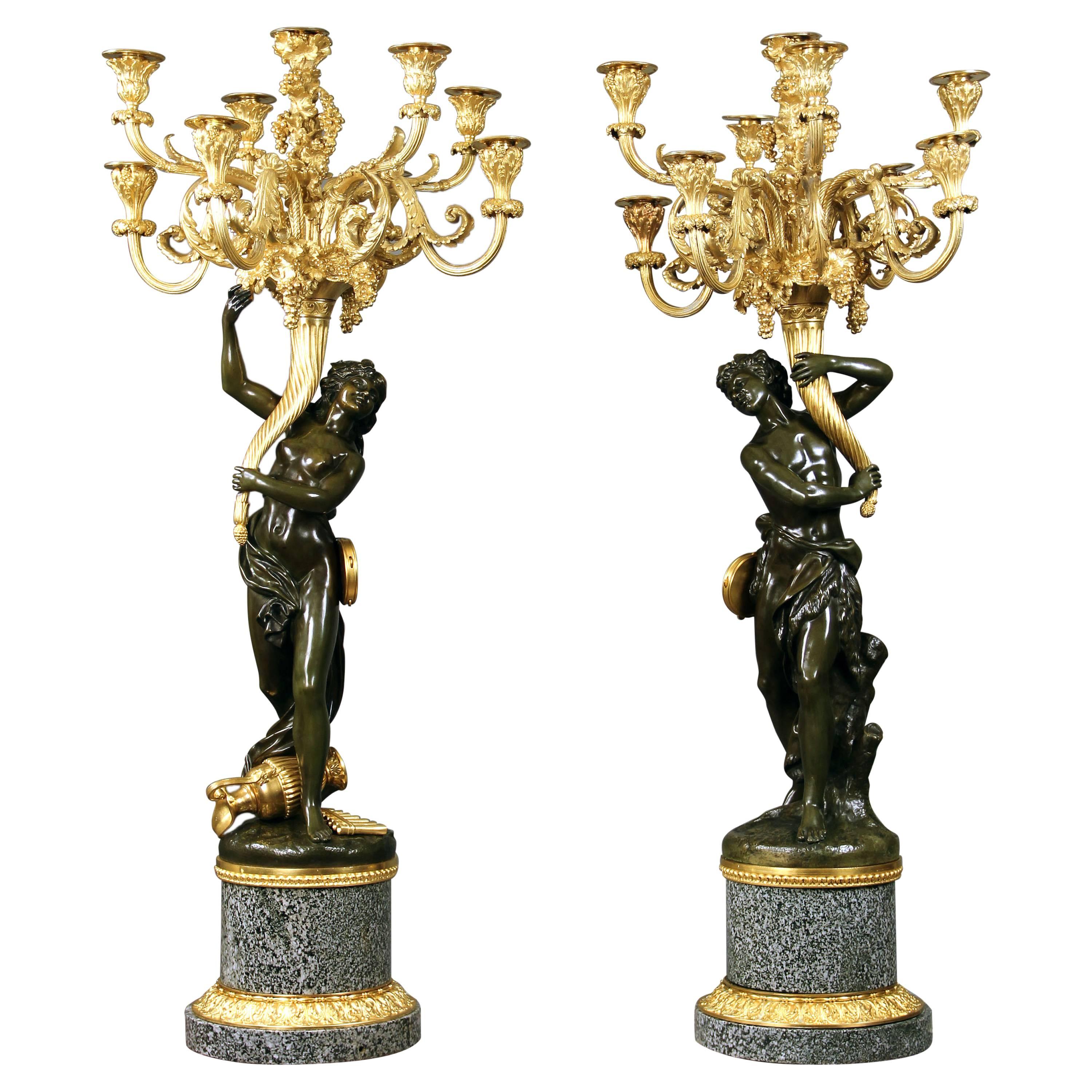Items Similar to French 19th Century Large Jewelry Casket After Clodion
Want more images or videos?
Request additional images or videos from the seller
1 of 11
French 19th Century Large Jewelry Casket After Clodion
About the Item
Large Napoleon III Jewelry Casket
In chiseled and silvered bronze, decorated with putti scenes in the style of Claude Michel dit Clodion (1738-1814), symbolizing Allegories of Arts,
Sciences and Letters in light relief on three sides.
Heart friezes, ribbons, fluted sides.
Handle in flower shape, with its original key.
It rests on broad foliated feet, wooden background and interior in original velvet.
Late 19th Century
Circa 1870
Claude Michel, dit Clodion, born December 20, 1738, in Nancy, died March 29, 1814, in Paris, nephew of the Adams, pupil of Pigalle and son-in-law of the sculptor Pajou, he had remained in Italy for nine years where he discovered the Roman and Hellenistic terra cottas in the excavations of Pompeii. From then on, ancient art inspired Clodion who specialized in terracotta, ceramic sculpture and decorative bas-relief. He was one of the most representative French sculptors who worked in the Rococo style.
During the reign of Louis XVI, Clodion made important commissions with var-ious relief techniques and round sculptures. He practiced bronze casting and baking in terracotta and excelled in casting mythological and allegorical figures, such as groups of dancers, nymphs, satyrs and interlaced bacchantes or terracotta dancers. Clodion also left behind examples of his master in marble work in which he was also a recognized expert.
In 1755, Clodion went to Paris and entered the studio of the sculptor Lam-bert-Sigisbert Adam, his uncle. When his uncle died, he became a pupil of J.B. Pigalle. In 1759 he won the Grand Prize for Sculpture from the Royal Academy of Painting and Sculpture and in 1761 he received the first silver medal for his model studies.
He went to Italy in 1762 and shared a studio with Jean-Antoine Houdon. Member of the Académie de France in Rome, he succeeded quickly.
This is why he made marbles for the Empress Catherine II and for the Duke of La Rochefoucauld. In 1771, Clodion returned to Paris and enjoyed tremendous success. He exhibited regularly at the Salon.
He collaborated with the architect Brongniart between 1775 and 1782 to cre-ate the stone decor of the financial hotel Bouret de Vézelayet and the facade of the convent of the Capuchins. He also designed the bathroom of the Hotel de Besenval. The artist, one of the references of monumental sculpture at the beginning of the reign of Louis XVI, made for the king a statue of Montesquieu which was intended for the Grand Gallery of the Louvre. The marble statue was exhibited at the Salon in 1783.
He worked on public monuments in Paris, such as the execution of the marble relief of the triumphal arch of the Carrousel which represents the entrance of Napoleon to Munich.
- Similar to:Claude Michel Clodion (Sculptor)
- Dimensions:Height: 10.24 in (26 cm)Width: 14.97 in (38 cm)Depth: 8.27 in (21 cm)
- Style:Napoleon III (Of the Period)
- Materials and Techniques:Bronze,Silvered
- Place of Origin:
- Period:
- Date of Manufacture:circa 1870
- Condition:Wear consistent with age and use.
- Seller Location:Saint-Ouen, FR
- Reference Number:1stDibs: LU2612339568992
About the Seller
4.9
Vetted Seller
These experienced sellers undergo a comprehensive evaluation by our team of in-house experts.
1stDibs seller since 2017
57 sales on 1stDibs
Typical response time: 1 hour
- ShippingRetrieving quote...Ships From: Saint-Ouen, France
- Return PolicyA return for this item may be initiated within 2 days of delivery.
More From This SellerView All
- French 19th Century Ormolu Chandelier After André-Charles BoulleBy André-Charles BoulleLocated in Saint-Ouen, FRA Louis XIV style ormolu eight-lights chandelier, after the famous model by Andre-Charles Boulle An Ormolu Eight-lights Chandelier, each arm held by Ind...Category
Antique 1870s French Louis XIV Chandeliers and Pendants
MaterialsOrmolu
- 19th Century French Lacquered Wood ChandelierLocated in Saint-Ouen, FRA 19th century French polychromed lacquered wood eight-light chandelier Lacquered gloss cream wood with green, red and brown highlights Contained vase ending in foliated seed welcoming eight arms forming semicircles. The top has a frieze of red flowers in green interlacing and is topped with leaves and a painted egg cream...Category
Antique 1890s French Louis XVI Chandeliers and Pendants
MaterialsWood
- A French 19th Century Pair of Louis XVI Style Large Curule StoolsBy Georges Jacob, Maison JansenLocated in Saint-Ouen, FRA French 19th Century Pair of Large Rectangular Curule Stools Gilt and carved wood, decorated with interlace frieze, acanthus leaves and rosaces The 4 feet linked by a gadrooned stretcher. Louis XVI Style Napoléon III Period In the manner of Georges Jacob (1739-1814) Attributed to Maison Jansen Circa 1900 Used Petit Point Tapestry Upholstery Maison Jansen, the French luxury: Opulence, refinement, audacity of style marriages… so many words agree with Maison Jansen. Through this name, a whole era sounds like a reminder of a certain French chic… Some names evoke immutable images, atmospheres... Like Jansen, for example. Let’s close our eyes… The 1960s and 1970s are at their peak. France is doing well. It is a country of full employment where everything seems possible. Within the international Jet Set, a carefree crowd of movie stars, public figures, literary idols and crowned heads, we love the Maison Jansen, its taste for styles struck with a good quality exuberance, and its brilliant side. It all began in 1880, when the Dutchman Jean Henri Jansen founded the epon-ymous house in Paris. Jansen is part of the continuity of these world-famous furniture manufacturers and companies that operated under the Second Empire and at the time of the Universal Exhibitions, as the ‘Escalier de Cristal’ teaches. At that time, the Union Centrale des Beaux-Arts appliqués à l'Indus-trie and the Société du musée des Arts Décoratifs merged to form the Union Centrale des Arts Décoratifs. Supported by both gallery owners, collectors and manufacturers, this organi-zation gives the «la» to the whole profession, and in the prevailing politico-ideological slump (France was defeated by Prussia in 1871 and Napoleon III is in exile), the ‘Union Centrale des Art Décoratifs’ focuses production on the celebration of past styles. While this nostalgia evokes memories of an era that we imagine more stable, an innovative exoticism will be all the rage: the reign of Turkish style and Japonisme. The Jansen house masterfully rushed into the «exotic» trend, but quickly de-veloped a style derived from the ornamental splendor of the eighteenth, then a little later, so-called «imperial» styles mainly intended for royal families. Af-ter the First World War, J.H Jansen was joined by the cartoonist Albert Cazes, by Stéphane Boudin and by Pierre Delbée, who successively directed the house when it disappeared in 1929. At the end of the Kennedy era, Boudin complete-ly redecorated the White House, at the request of the First Lady, Jackie, who had fallen in love with his work after discovering it at Malmaison. In 1971, Jansen joined forces with Leleu-Deshays and continued its quest for excellence. From 1969 to 1979, the dandy decorator Serge Robin took the reins of the house, granting it an eclectic and luxurious style: he revisited the great eras of French art, from the Renaissance to Louis XVI, by modernizing them with more contemporary pieces in Plexiglas or wrought iron. His recomposed and sophisticated style met with resounding success. When Jackie Kennedy, who became the wife of the great Greek shipowner Aristotle Onassis, moved to France, the young architect married Louis XVI-style furniture to modernist designs from the 1950s. When the Shah of Iran decided to celebrate the 250th anniversary of the Per-sian Empire in 1971, Serge Robin and his teams turned to the grandiose and ephemeral setting of Persepolis. A hundred semi-trailers then left the work-shops on Rue Saint-Sabin to reach Tehran. At the same time, Princess Soraya of Iran commissioned her a sumptuous palace for Avenue Montaigne, the princes Faisal bin Fahd of Arabia and Mubarak Al-Sabah, and the Agnelli snatched it. On the French side, he puts his talent at the service of Brigitte Bardot, for whom he completely revamped the Madrague and the Lannes boulevard. Serge Robin embodies all the audacity of the name Jansen with the most im-probable weddings. With him, Plexiglas tables, Japanese chairs from the 50s, gold thread curtains, zebra sofas...Category
Antique 1890s French Louis XVI Stools
MaterialsTapestry, Wood, Giltwood
- Impressive French 19th Century Neo-Greek Style Bronze Nine-Lights CenterpieceBy Georges Emile Henri ServantLocated in Saint-Ouen, FRAn impressive French 19th century Neo-Greek style bronze nine-lights center piece In patinated and gilt bronze, engraved on the body of foliage and rings, the collar decorated with a frieze of palms in bas-relief. It is held by a tripod base decorated with shards, foliage, and fins, in the center a mask of man. Surmounted by three arms, nine-lights ending in lion’s paw. Curved triangular base with ivy friezes, and palm-leaf feet. Attributed to Georges Emile Henri...Category
Antique 1860s French Napoleon III Vases
MaterialsBronze
- 19th Century French Pair of Belle Époque Baccarat Crystal Crinoline PlafonniersBy Cristalleries De BaccaratLocated in Saint-Ouen, FRPair of 19th Century Belle Époque Baccarat Crystal “Crinoline” Plafonniers Crinoline model created in 1895 Composed of a crown in gilded bronze f...Category
Antique 1850s French Napoleon III Chandeliers and Pendants
MaterialsCrystal, Ormolu
- French 19th Century Restauration Psyche Coiffeuse MirrorLocated in Saint-Ouen, FRA French 19th Century Restauration Psyche Coiffeuse mirror Patinated and gilt bronze rectangular Psyche Coiffeuse Mirror designed with Greek frieze, palmettes, oves, strings of p...Category
Antique 1820s French Restauration Table Mirrors
MaterialsBronze
You May Also Like
- French large Bronze of a Lion after Claude Michel Clodion, 19th centuryBy Claude Michel ClodionLocated in Worpswede / Bremen, DEVery fine and large bronze of a reclining lion. Many details, such as the treatment of the lion’s mane demonstrate the sculptor’s mastery skill, as well as an understanding of the an...Category
Antique 19th Century French Neoclassical Animal Sculptures
MaterialsBronze
- 19th Century French Patinated Bronze Sculpture of Faun Child Satyr after ClodionBy Claude Michel ClodionLocated in Vero Beach, FL19th century French patinated bronze sculpture of a faun, child satyr after Clodion This beautiful sculpture of outstanding quality in Rococo style is a finely cast bronze pan...Category
Antique 19th Century French Rococo Figurative Sculptures
MaterialsCarrara Marble, Bronze
- Outstanding Large 19th Century Bronze & Porcelain Jewelry Casket BoxBy Königliche Porzellan-Manufaktur (KPM)Located in Long Branch, NJOutstanding Large 19th Century Bronze & Porcelain Jewelry Casket Box Dimensions : 14" Tall X 16" Wide X 11" Deep This gorgeous Antique jewelry ...Category
Antique Late 19th Century German Rococo Jewelry Boxes
MaterialsOrmolu
- 19th Century Sevres Style CasketLocated in London, GB19th century French Sevres style ormolu and porcelain casket having light blue ground, painted with panels of romantic scenes.Category
Antique Mid-19th Century French Napoleon III Decorative Boxes
MaterialsOrmolu
- Wonderful Pair of Late 19th Century Two Tone Bronze Candelabra after ClodionBy Claude Michel ClodionLocated in New York, NYA wonderful pair of late 19th century two tone bronze nine-light candelabra. After Clodion. Each cast as a female and a male figure from a bacchanale upholding eight scroll branches with a central branch in the fotm of a quiver, on a bronze-mounted circular base of granite. Claude Michael Clodion, [1738-1814], was the son-in-law of sculptor Augustin Pajou; he trained in Paris in the workshops of Lambert Sigisbert Adam, his maternal uncle and Jean-Baptiste Pigalle, the most successful sculptor of the time. After winning the Prix de Rome, he moved to Italy, sharing a studio with Jean-Antoine Houdon and studying antique, Renaissance, and Baroque sculpture. In 1771 Clodion returned to Paris, where he continued to produce mostly in terracotta. He also worked with his brothers in other media, decorating objects...Category
Antique Late 19th Century French Belle Époque Table Lamps
MaterialsGranite, Bronze
- 19th Century Bronze Bacchus Influenced Clodion GroupBy Claude Michel ClodionLocated in Brighton, SussexA very good quality 19th century patinated silvered bronze Bacchus influenced group. Signed; Clodion.Category
Antique 19th Century French Classical Greek Figurative Sculptures
MaterialsBronze
Recently Viewed
View AllMore Ways To Browse
Large Decorative Painting
French Antique Decorative Arts Decorative Arts
Antique French Medals
Antique Master Bedroom Furniture
Large Stone Jewelry Boxes
Antique French Heart
French Bas
Antique Studio Light
Antique Marble Relief
19th Century Italian Jewelry
Large Antique Jewellery Box Jewellery Boxes
Large Antique Jewelry Box
Flute Box
Flutes Boxed
French Royal Jewelry
Three Antique Jewellery Boxes Jewellery Boxes
French Large Jewelry Box
French Bas Relief
